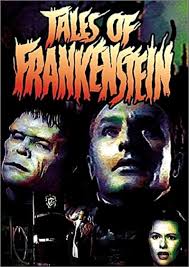
At night, after the servants have gone, Baron Frankenstein (Anton Diffring) works on creating a man out of cadaver parts. He succeeds in his experiment. Unfortunately, the brain he used was from a convicted criminal. When his creation tries to kill him, Frankenstein realizes that he needs a pure brain, a normal brain.
Frankenstein receives a visit from Paul Halpert (Richard Bull), and his wife, Christine (Helen Westcott). Paul is dying and he and Christine have heard about the Baron’s experiments on creating life. They want Frankenstein to heal Paul. The Baron sends them away telling them that he can’t do anything for them. The Halperts return to the local tavern where Paul ends up dying.
After the funeral, Frankenstein pays the local grave digger to leave the grave open until morning. During the night Frankenstein returns to the grave, steals Paul’s brain, and returns to his castle. Using the new brain, Frankenstein puts the new brain in his creation and revives it.
In the meantime, Christine finds out what the Baron has done. She rushes to the castle hoping to find her husband, but what she finds is not what she really wanted.
“Tales of Frankenstein” was released in 1958 and was directed by Curt Siodmak. It is an American and British made for television pilot that was never sold. The name of the episode was “The Face in the Tombstone Mirror”. The pilot was created in a joint effort by Hammer Studios and Screen Gems, a part of Columbia Pictures. The series was intended to be a mystery and horror anthology series similar to “The Twilight Zone” and “The Outer Limits”. Columbia and Hammer had planned on producing 26 episodes, 13 by Hammer and 13 by Columbia. Siodmak had concerns about the viability of a television series the just had Frankenstein stories.
The episode produced was a combination of elements taken from Universal’s and Hammer’s take on the Frankenstein legend as well as Mary Shelley’s 1818 novel “Frankenstein: or The Modern Prometheus”. The opening credits contain some stock footage from Universal’s “Inner Sanctum” television series as well as from “Dracula” 1931.
There is some descent atmosphere here, but the episode is rather plain. There’s nothing new about the story. Strangely, the lack of imagination is not why the program wasn’t picked up. Problems between Universal and Hammer on what kind of stories and the scripts to be used created friction between the two cinema franchises. Both entities wanted the lion’s share of say in the project. Eventually Hammer executives gave up and went home. Some of the scripts that were rejected by Universal were later used by Hammer for some of the most iconic films of their Frankenstein series.
The Frankenstein monster was played by Don Megowan.

